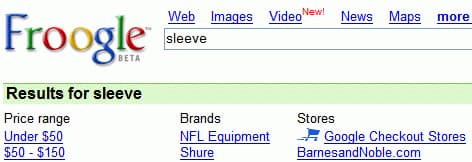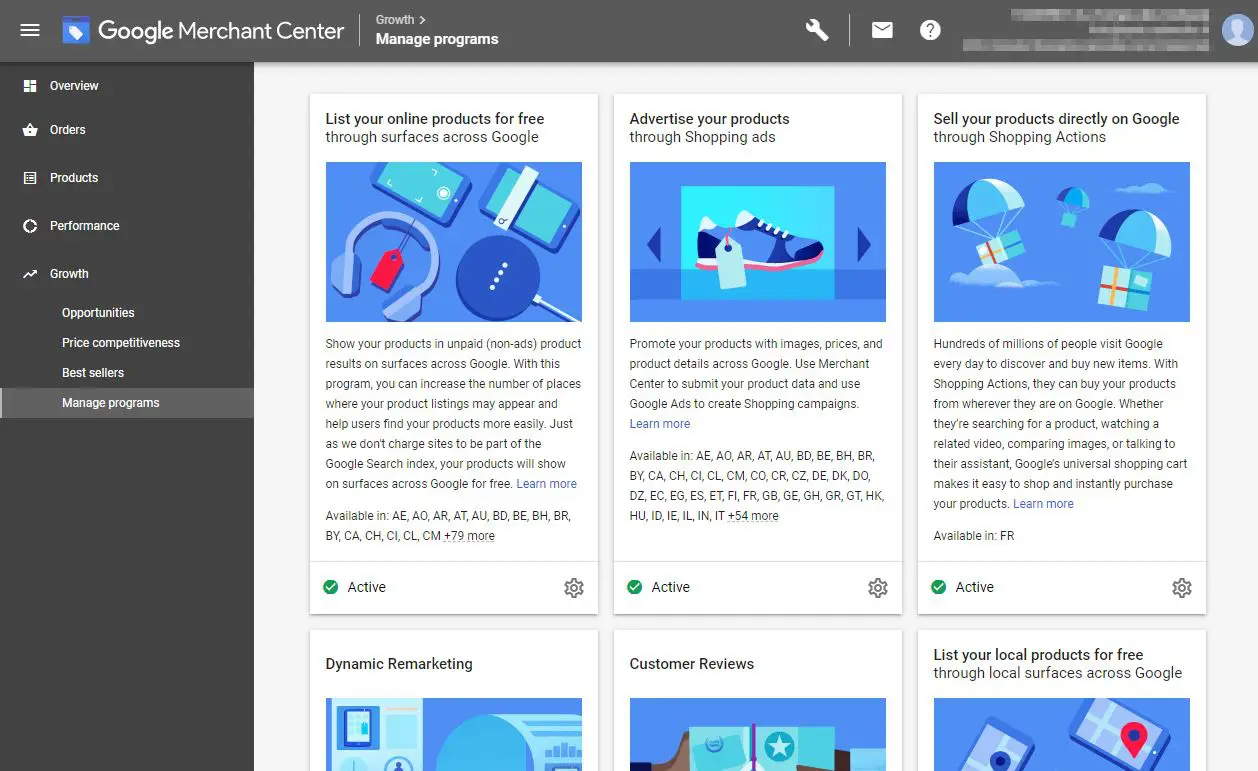Since the start of the sanitary crisis, Google has announced that they would allow merchants to benefit from the Google Shopping service free of charge, first in the United States and then in the rest of the world. And it’s done! From now on, e-merchants can display their products without giving Google a commission.
From Froogle to Google Shopping
Launched in 2002 under the Froogle name, Google Shopping was free at first! At that time, the tool allows us to create product sheets which contain all information that merchants wanted to display on Google Shopping results. The provided information was meant to both establish a display rank and inform the consumer. Thus, only technical conditions applied.
©Leptidigital
It is in 2012 that Google decided to make its service lucrative with a “cost per click” model. This monetisation had allowed, among other things, to respond to the influx of users. Indeed, competition had become more intense and prioritising results according to the quality of information was no longer sufficient. Paying a commission to Google then guaranteed a better ranking. That’s how the sponsored inserts appeared which are today managed in Google Ads.
Google shopping, the newly free service
More and more users want an improved shopping experience by eliminating intermediate steps between product search and purchase validation.
In addition to meeting this need, Google wants to allow all merchants, even those who do not have an e-commerce website, to be able to generate visibility on products in stock. All the more so in these times of Covid, when purchasing habits are being turned upside down and retailers, including those who do not have an e-commerce site, need even more visibility in order to survive.
In addition, the notion of stock is crucial in optimising purchasing journeys. Indeed, if the consumer cannot continue his purchase because the product is no longer available, he might give up or have to start the process all over again. As we have seen through our consumption trends study, 84% of French consumers believe that information on the availability of the product is important. For 37% of them, it’s even considered fundamental.
Google Shopping, how does it work for a company ?
In order to manage your free or paid product sheets that will be displayed in Google Shopping, you must use the dedicated Merchant Center tool. It is by this tool that you will be able to create, correct and optimize your sheets.
©Cybercite
For those who already use Google Shopping and therefore already have a Merchant Center account, all you have to do is to go on the dedicated tab for free product sheets. For others, you need to create an account with a Gmail address, giving information about your company, payment options and related tools.
The mechanisms of free referencing must be taken into consideration. As you know, in order for your content to appear in the first results without using paid referencing, you have to focus on quality and quantity to satisfy Google’s algorithm. Indeed, the results of a search are necessarily hierarchical. To get started with Google Shopping you must therefore pay attention to the photo of the product, the words you use in its title but also in its description. All of this using the right keywords. In addition, you will need to ensure that you provide qualitative product feeds: accurate product description, truthfulness, completeness and consistency of information. Otherwise, there is a risk of being among the last results.
Please note: paid services are still available, but Google declares that the majority of displayed results concern free sheets.
Can Google keep its promise of free services over the long term?
Indeed, in the short-term, the first brand to reference its products in stock for free on Google Shopping will be more exposed to users than the competition. As a result ? An increase in sales which also induces an increase of the revenues.
However, is this valid in the long term? Free of charge logically leads to an increase in the number of users, which quickly becomes considerable. So to ensure that you appear in the first results for free, you can optimise the quality of the data you enter as explained above. However, if all retailers become good students with optimised usage of the tool, the only thing left to do is monetising the advertisements in this race to hold advertising space. A judicious reflection on the part of Google, which is counting on this.
Indeed, logically, the more users there are, the more profitable the service is! At this point, Google will be able to convince retailers to use its Google Shopping Actions service and truly compete with ohter companies. At the cost of seeing your website’s traffic decrease in favour of Google’s.
In our opinion, Google Shopping is more interesting for certain sectors where there is less competition. We therefore advise you to take these different elements into consideration in order to focus your efforts on the most profitable levers for your business!
What alternative to Google Shopping is there to meet these needs?
As we have seen, users want a better shopping experience with a simplified purchasing process, while retailers want to generate traffic to their website whether or not it is merchant. So how can we reconcile everyone’s expectations without necessarily having to battle in the auctions for paid campaigns, while adapting the buyer’s journey to the different media and being advised through it?
The production of qualitative content on different media will always be the key to success. And if you allow users to buy directly from these media, you will increase your chances of conversion.
That is what the Where to Buy offers! Putting a call-to-action on your communications or directly on your website to benefit from qualified traffic. In this way, you can adapt the buyer’s journey to different users! Indeed, the people who will click on this button are already interested in your product thanks to your communications. This button allows you to display retailers who have your products in stock, including your e-commerce website if you have one! Thus, you increase the conversion directly from the messages you have sent to users.
The Where to Buy solution is an opportunity for brands , but also retailers ! Romain, the retail manager of Click2Buy explains:
“Now that Google Shopping is free of charge, more and more retailers will invest in the creation of product feeds to ensure appearing on it. Thanks to these same feeds, they will be able to appear for free on our Where to Buy solution.”
In summary?
To optimize your actions, we advise you to base them on your target’s needs. Keep in mind the Golden Circle concept from Simon Sinek! Start from consumers’ needs by giving your brand or your product(s) a reason to exist (Why), ask you how to answer it (How) and finally with which product (What).
In our opinion, here is the formula to be retained and applied: qualitative communications combining brand content and promotion of your products + an adapted buyer’s journey + a purchase button on all your communications + the measurement of relevant indicators = an increase in consumer satisfaction and conversion!
Sources :
Le journal du net
Le blog du modérateur
Le pti digital
Cybercité
Logo vecteur créé par jcomp – fr.freepik.com



 “Now that Google Shopping is free of charge, more and more retailers will invest in the creation of product feeds to ensure appearing on it. Thanks to these same feeds, they will be able to appear for free on our Where to Buy solution.”
“Now that Google Shopping is free of charge, more and more retailers will invest in the creation of product feeds to ensure appearing on it. Thanks to these same feeds, they will be able to appear for free on our Where to Buy solution.”